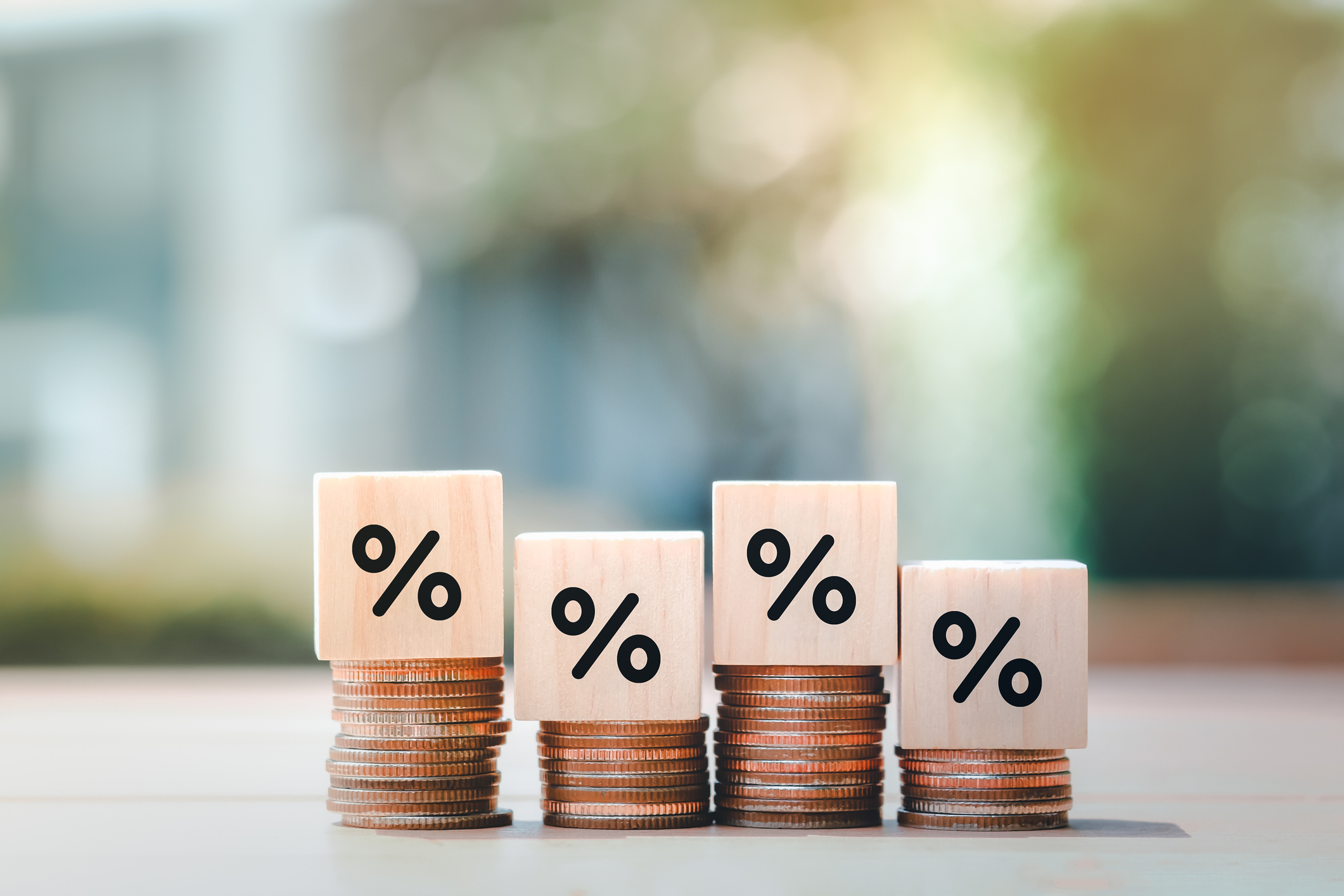R.I.P. 60-40 Portfolio
The old standby allocation of 60% stocks and 40% government bonds might not work for buy-and-hold investors anymore.


Jared Woodard is head of the Research Investment Committee at BofA Securities.
What is the 60-40 portfolio, and why has it been the go-to model for many investors? In a 60-40 portfolio, 60% of assets are invested in stocks and 40% in bonds—often government bonds. The reason it has been popular over the years is that traditionally, in a bear market, the government bond portion of a portfolio has functioned as insurance by providing income to cushion stock losses. In addition, bonds tend to rise in price as stock prices fall.
Why do you say that the 60-40 portfolio is dead? The problem is that as yields on bonds head lower and lower—the 10-year Treasury note pays 0.7% per year—there’s less return in fixed-income securities for buy-and-hold investors. So that insurance works less well over time. Plus, the prospect of government policies to boost economic growth increases the risk of inflation. Treasuries could become more risky as interest rates start to rise and prices, which move in the opposite direction, fall.
From just $107.88 $24.99 for Kiplinger Personal Finance
Become a smarter, better informed investor. Subscribe from just $107.88 $24.99, plus get up to 4 Special Issues

Sign up for Kiplinger’s Free Newsletters
Profit and prosper with the best of expert advice on investing, taxes, retirement, personal finance and more - straight to your e-mail.
Profit and prosper with the best of expert advice - straight to your e-mail.
But don’t bonds limit volatility in your portfolio? Bonds can become very volatile. Look back at 2013, after the Federal Reserve said it would reduce purchases of Treasuries and mortgage-backed securities. There was a period of incredible volatility for bonds—known as the taper tantrum—as investors adjusted. Our argument is that as the prospects increase for more government intervention in the markets to support economic growth, the risk goes up that Treasuries will become a source of volatility.
What’s a better portfolio allocation now? There are two parts to that question. First, who is the investor? Older investors with specific income needs may find that their overall allocation to fixed income might not need to change much—but the kind of fixed income investments they own might need to be very different. Younger investors might find that they can tolerate the volatility of the stock market over the course of an entire investing career, given the difference in return from stocks over bonds.
And the second part? That’s the economic outlook. If we were at the end of an expansion, it would make sense to be more cautious. But we’re coming out of a recession, and prospects for corporate earnings and economic growth are much higher next year. At the start of a business cycle and new bull market, being too cautious means you miss out on the full returns of that cycle.
What fixed-income holdings do you prefer now, and why? Think in terms of sources of risk. Treasury bonds won’t default, but inflation and higher interest rates are big risks. Other bonds yield more, but they have credit risk, or the risk of not being paid back in full. Our contention is that the fixed-income portion of your portfolio should feature more credit and stock market risk and less interest rate risk.
We think the credit risk is worth taking in corporate bonds rated triple B, or even in higher-rated slices of the high-yield market. We also like preferred stocks and convertible bonds, which have characteristics of both stocks and bonds. These four categories can yield 2.5% to 4.5% today. Real estate investment trusts that invest in mortgages yield about 8% and pose less risk than REITs investing in commercial real estate. Finally, some 80% or more of S&P 500 companies pay dividends that are higher than the yield of 10-year Treasuries.
Profit and prosper with the best of Kiplinger's advice on investing, taxes, retirement, personal finance and much more. Delivered daily. Enter your email in the box and click Sign Me Up.

Anne Kates Smith brings Wall Street to Main Street, with decades of experience covering investments and personal finance for real people trying to navigate fast-changing markets, preserve financial security or plan for the future. She oversees the magazine's investing coverage, authors Kiplinger’s biannual stock-market outlooks and writes the "Your Mind and Your Money" column, a take on behavioral finance and how investors can get out of their own way. Smith began her journalism career as a writer and columnist for USA Today. Prior to joining Kiplinger, she was a senior editor at U.S. News & World Report and a contributing columnist for TheStreet. Smith is a graduate of St. John's College in Annapolis, Md., the third-oldest college in America.
-
 6 Champagne Problems Successful Retirees Face
6 Champagne Problems Successful Retirees FaceWhat do you do if your biggest financial threat is simply having too much of a good thing — money?
-
 Congress is Set for a Busy Winter
Congress is Set for a Busy WinterThe Kiplinger Letter The Letter editors review the bills Congress will decide on this year. The government funding bill is paramount, but other issues vie for lawmakers’ attention.
-
 A Portfolio Checklist If You're Planning to Retire in 2027
A Portfolio Checklist If You're Planning to Retire in 2027Are you planning on retiring in 2027? This portfolio checklist will help put you on the right path.
-
 The December CPI Report Is Out. Here's What It Means for the Fed's Next Move
The December CPI Report Is Out. Here's What It Means for the Fed's Next MoveThe December CPI report came in lighter than expected, but housing costs remain an overhang.
-
 How Worried Should Investors Be About a Jerome Powell Investigation?
How Worried Should Investors Be About a Jerome Powell Investigation?The Justice Department served subpoenas on the Fed about a project to remodel the central bank's historic buildings.
-
 The December Jobs Report Is Out. Here's What It Means for the Next Fed Meeting
The December Jobs Report Is Out. Here's What It Means for the Next Fed MeetingThe December jobs report signaled a sluggish labor market, but it's not weak enough for the Fed to cut rates later this month.
-
 The November CPI Report Is Out. Here's What It Means for Rising Prices
The November CPI Report Is Out. Here's What It Means for Rising PricesThe November CPI report came in lighter than expected, but the delayed data give an incomplete picture of inflation, say economists.
-
 The Delayed November Jobs Report Is Out. Here's What It Means for the Fed and Rate Cuts
The Delayed November Jobs Report Is Out. Here's What It Means for the Fed and Rate CutsThe November jobs report came in higher than expected, although it still shows plenty of signs of weakness in the labor market.
-
 December Fed Meeting: Updates and Commentary
December Fed Meeting: Updates and CommentaryThe December Fed meeting is one of the last key economic events of 2025, with Wall Street closely watching what Chair Powell & Co. will do about interest rates.
-
 The Delayed September Jobs Report Is Out. Here's What It Means for the Fed
The Delayed September Jobs Report Is Out. Here's What It Means for the FedThe September jobs report came in much higher than expected, lowering expectations for a December rate cut.
-
 October Fed Meeting: Updates and Commentary
October Fed Meeting: Updates and CommentaryThe October Fed meeting is a key economic event, with Wall Street turned into what Fed Chair Powell & Co. did about interest rates.